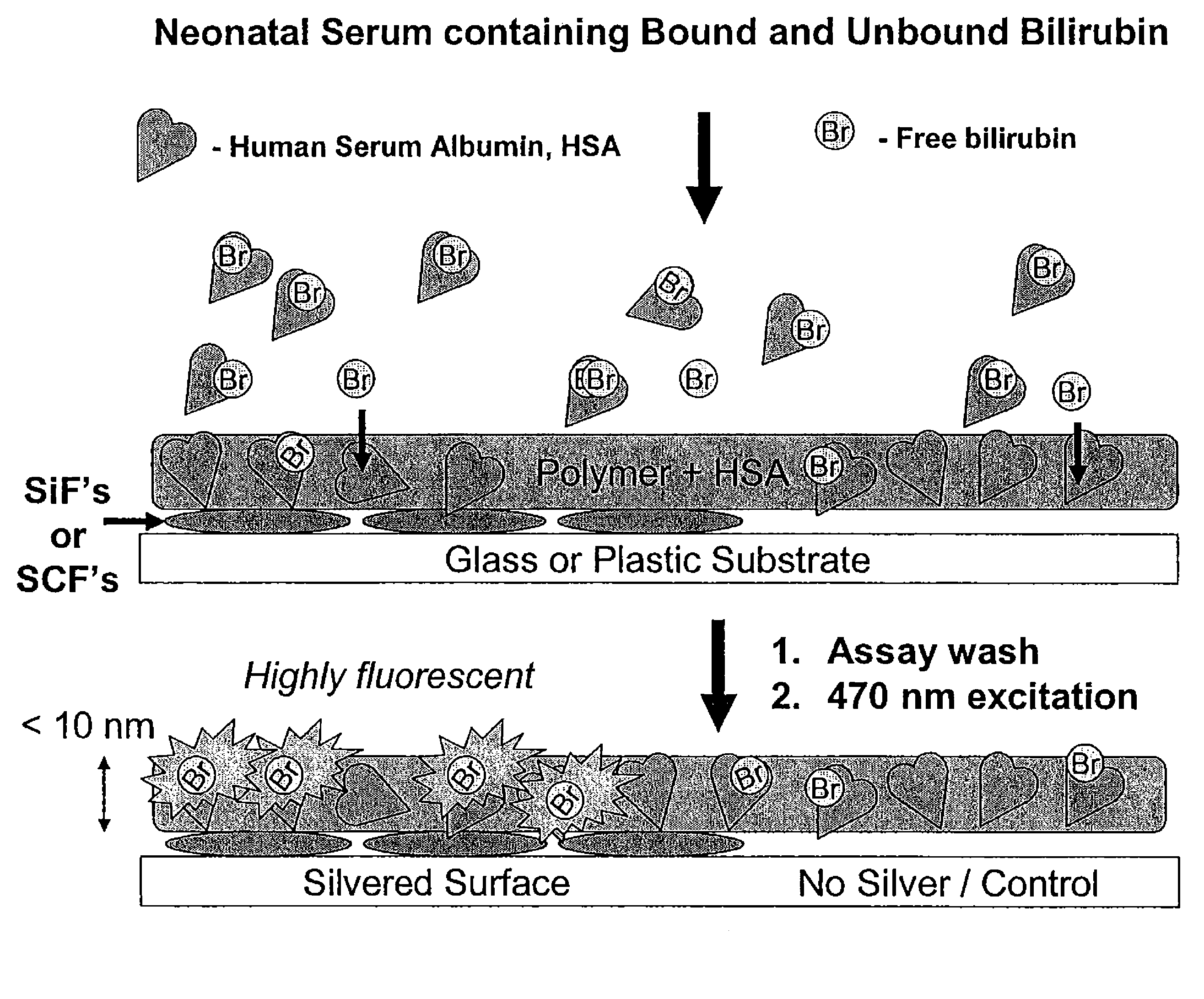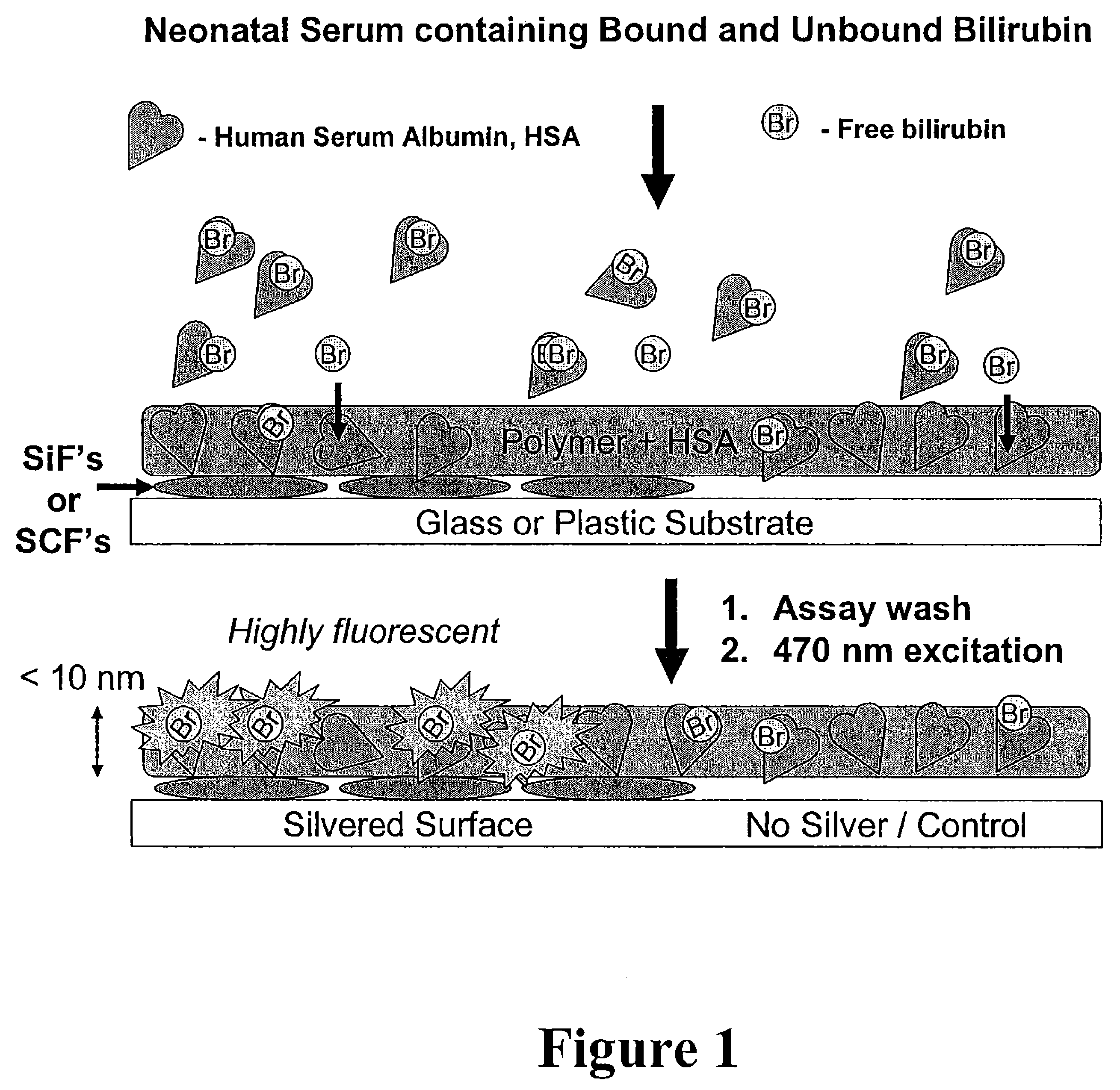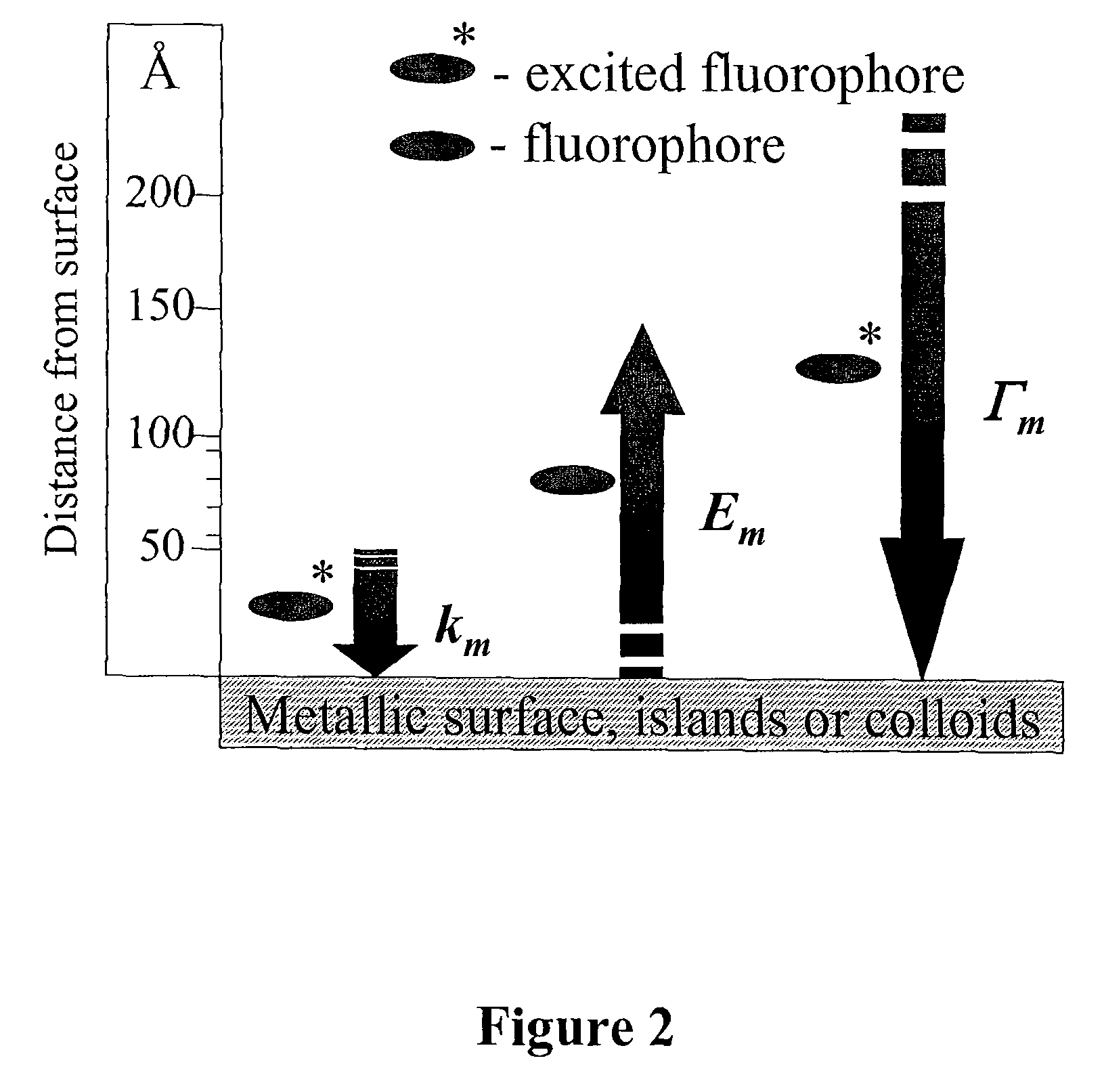Metal enhanced fluorescence-based sensing methods
a technology of enhanced fluorescence and sensing methods, applied in the field of detection methods, can solve the problems of limited use of such technology, termed metal enhanced fluorescence (mef), and lack of sensitivity of determination and quantification of assay methods and/or systems, and achieve the effect of enhancing fluorescen
- Summary
- Abstract
- Description
- Claims
- Application Information
AI Technical Summary
Benefits of technology
Problems solved by technology
Method used
Image
Examples
Embodiment Construction
[0082]The present invention provides assays utilizing Metal-Enhanced Fluorescence (MEF) for detection, isolation and / or amplification of free unbound bilirubin or target nucleotide sequences.
[0083]Most knowledge relating to fluorescence is based on measurements of the spectroscopic properties of fluorophores that upon excitation, radiate into a homogeneous and non-conducting medium, typically referred to as free space. These spectral properties are well described by Maxwell's equations for a radiating oscillating dipole. However, the interactions of an emitting dipole with physical objects can be considerably more complex, as known from antenna and receiver design. The size and shape of an antenna are designed with the goal of directing the radiation and accounting for its interactions with the earth's surface. A fluorophore is also like an antenna, but one, which oscillates at high frequency and radiates short wavelengths. Local effects are not usually seen because of the small siz...
PUM
| Property | Measurement | Unit |
|---|---|---|
| thickness | aaaaa | aaaaa |
| thickness | aaaaa | aaaaa |
| thickness | aaaaa | aaaaa |
Abstract
Description
Claims
Application Information
 Login to View More
Login to View More - R&D
- Intellectual Property
- Life Sciences
- Materials
- Tech Scout
- Unparalleled Data Quality
- Higher Quality Content
- 60% Fewer Hallucinations
Browse by: Latest US Patents, China's latest patents, Technical Efficacy Thesaurus, Application Domain, Technology Topic, Popular Technical Reports.
© 2025 PatSnap. All rights reserved.Legal|Privacy policy|Modern Slavery Act Transparency Statement|Sitemap|About US| Contact US: help@patsnap.com



